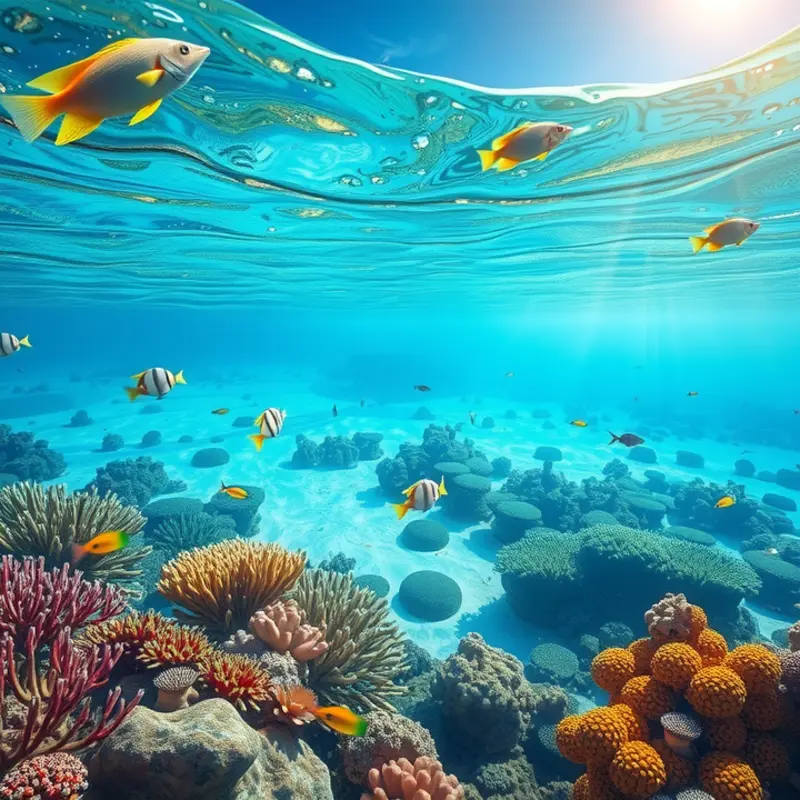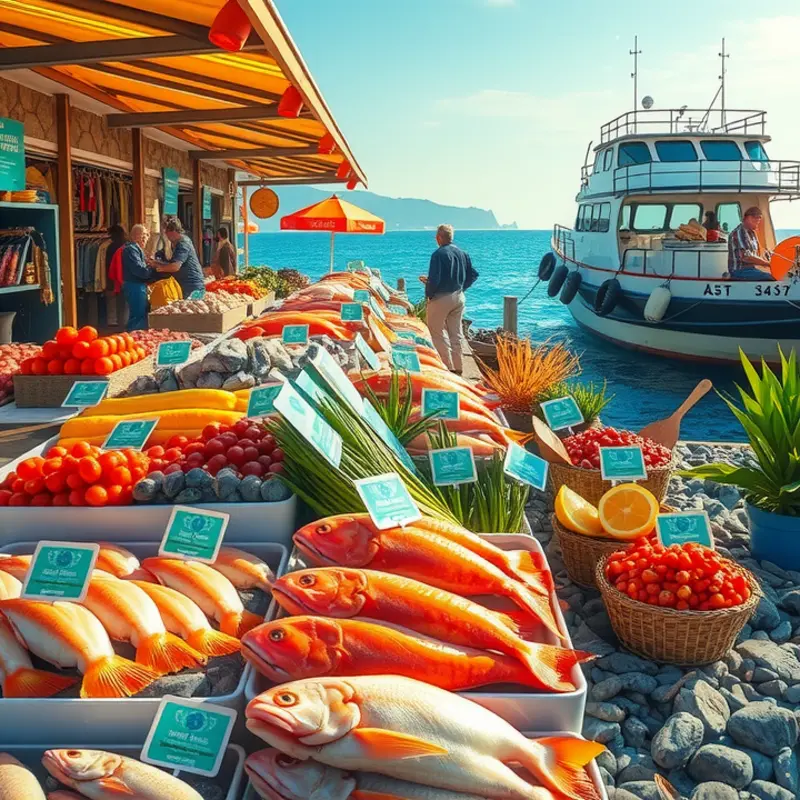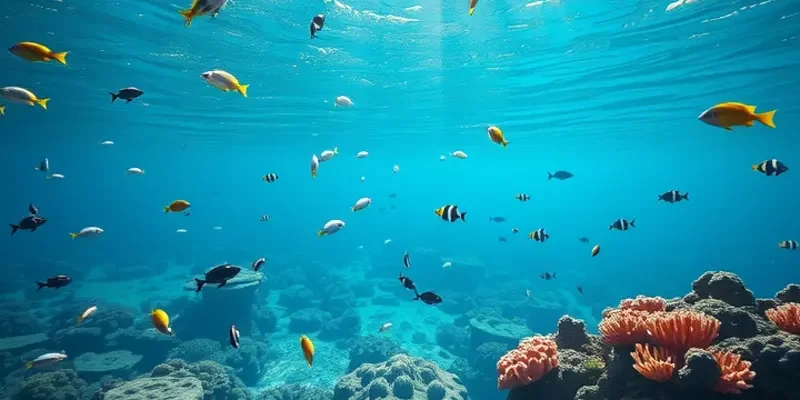As the ocean’s bounty becomes increasingly fraught with environmental challenges, making informed choices about seafood is essential for those who care about our planet’s health. Overfishing, habitat destruction, and pollution are critical issues connected to seafood consumption. Fortunately, understanding sustainable seafood options can guide environmentally-conscious individuals in making choices that promote marine conservation and health. With an emphasis on both ethical practices and personal health, this journey into eco-friendly seafood will provide the knowledge to nurture both your plate and the ocean.
Understanding Seafood Sustainability

Seafood sustainability is a critical component of responsible consumption, ensuring that our oceans remain healthy and productive. Overfishing is a primary threat, depleting fish stocks faster than they can replenish. This practice not only endangers specific species but also disrupts entire marine ecosystems. To combat these issues, it is essential to understand the criteria that make seafood sustainable.
Impact of Overfishing: Overfishing occurs when fish populations are harvested at a rate that outpaces their natural ability to reproduce. This not only affects the targeted species but also has cascading effects on the entire food web, harming other marine life that relies on these fish for food. By choosing seafood from well-managed fisheries, consumers can help mitigate this impact.
Habitat Destruction: Activities like trawling and dredging can cause severe damage to marine habitats, such as coral reefs and seagrass beds, which are crucial for biodiversity. Choosing sustainably sourced seafood can help protect these vital habitats. For example, selecting seafood caught by methods that minimize bycatch and damage to the seabed supports healthier ocean ecosystems.
Certifications: To navigate the complexities of sustainable seafood, certifications offer a reliable guide. Two notable organizations are the Marine Stewardship Council (MSC) and the Aquaculture Stewardship Council (ASC). The MSC label indicates wild fish or seafood from fisheries that meet rigorous environmental standards. The ASC ensures responsibly farmed seafood, focusing on minimizing environmental and social impacts. These certifications empower consumers to make informed choices that support sustainable practices.
Empowering Choices: When shopping for seafood, look for products featuring recognized sustainability labels. Being informed about the different fish species and their population statuses is essential. Species such as cod and tuna have seen significant declines due to overfishing, whereas others like shrimp and mussels might be more sustainably farmed. By supporting fisheries and aquaculture operations that are transparent about their practices, consumers encourage a shift towards more sustainable seafood production methods.
Shopping Tips: To ensure you’re making ocean-friendly choices, consult seafood guides or apps that provide up-to-date information on sustainable options. These resources often rank seafood by sustainability, helping to make responsible decisions straightforward. Additionally, you might consider reducing seafood waste by planning meals carefully and using available tools to facilitate low-waste cooking and storage, as discussed in this eco-smart kitchen storage guide.
Understanding seafood sustainability is more than a personal choice; it’s a commitment to preserving the planet’s marine resources for future generations. By being aware of the impact of overfishing, the importance of habitat conservation, and the role of certifications, we can contribute to a healthier planet while enjoying the oceans’ bounty.
Making Eco-conscious Choices

Choosing sustainable seafood is not just about protecting marine life; it’s about aligning your consumption patterns with your core values. Start by examining local sources. Purchasing local seafood reduces your carbon footprint because it requires less transportation and supports local economies. Check out community fisheries that implement sustainable practices, ensuring the longevity of their resources.
Understanding seasonal availability is another vital step. Fish populations thrive at specific times of the year, and consuming during their peak seasons can prevent overfishing and promote ecological balance. Seasonal seafood is often fresher and more flavorful, offering a superior dining experience.
Support comes not only through purchasing but also asking the right questions. When you shop or dine out, take the initiative to ask retailers or restaurant staff about their seafood sourcing. Do they prioritize sustainability? Do they source from certified suppliers? Being inquisitive encourages transparency and can nudge businesses towards more sustainable practices.
Look for signs of sustainability on menus and at fishmongers. Certifications or labels indicating environmentally friendly practices should guide your choices. The shift towards menus and sellers that highlight sustainability can drive market demand for responsible harvesting.
To simplify seafood selection, create a personal seafood guide. List your favorite fish, noting their sustainability status and preferred purchasing methods. Such a guide can provide clarity in decision-making, even in unfamiliar settings.
Implementing these habits might seem minor, but they can deliver substantial ecological benefits. By choosing sustainable options, you reduce the demand for practices that harm ocean ecosystems. This conscientious approach extends to integrating eco-friendly habits in your kitchen, as discussed in eco-smart kitchen storage, allowing for a holistic approach to sustainable living.
By making small yet consistent changes in how you select and purchase seafood, you contribute to a healthier planet. Encouraging these practices in your community can magnify the impact. Together, we can create ripples of change that protect our oceans for future generations.
Final words
Choosing eco-conscious seafood decisions is a vital step towards fostering healthier oceans and more resilient ecosystems. By understanding sustainability criteria and committing to informed purchasing, every meal becomes an opportunity to make a positive impact. Shifting to environmentally-friendly seafood options contributes to the preservation of marine biodiversity and supports local communities engaged in responsible fishing practices. Remember, sustainability is within reach; each small choice cumulatively leads to substantial benefits for our planet. Let’s pledge to advocate for our oceans while enjoying delicious, healthy seafood.








